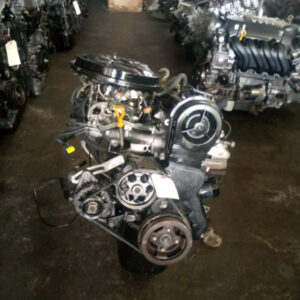Discover the current Patterns in Engine Modern Technology Via Tazz
In the rapidly evolving landscape of automotive modern technology, Tazz stands at the forefront, highlighting substantial advancements in engine systems that prioritize both innovation and sustainability. tazz. From hybrid engines that optimize fuel effectiveness to the appearance of hydrogen gas cells, the trends shaping modern powertrains are not only improving efficiency yet also attending to vital ecological obstacles. As the market continues to press limits, it is necessary to take into consideration just how these developments will influence future transportation options and the broader ramifications for worldwide energy usage. What exists ahead in this crucial transformation?
Hybrid Engine Innovations
Crossbreed engine technologies stand for a pivotal shift in auto innovation, incorporating the benefits of interior combustion engines with electric propulsion systems. This combination not just boosts gas efficiency but likewise reduces emissions, meeting increasingly stringent ecological laws. By utilizing both energy sources, hybrid engines can enhance performance, providing power when required while preserving gas throughout less demanding motoring conditions.
Recent innovations in hybrid technology include improvements in battery effectiveness and regenerative braking systems. These advancements permit for better energy healing during deceleration, which can be rerouted to help in acceleration or power auxiliary systems. Suppliers are concentrating on compact designs and lightweight materials to maximize the effectiveness of hybrid powertrains.
The advancement of plug-in hybrids has additionally expanded the market, allowing chauffeurs to bill their automobiles making use of typical electrical outlets. This attribute typically permits considerable all-electric range, more lowering dependancy on conventional fuels. tazz. As the automobile market proceeds to progress, hybrid engine technologies are expected to play an important function in bridging the void in between traditional vehicles and completely electrical designs, providing a transitional option that deals with diverse consumer needs and choices
Advancements in Electric Powertrains
The auto landscape is quickly evolving, with electric powertrains becoming a leading force in lasting transport. Advancements in electrical lorry (EV) innovation are dramatically improving efficiency, individual, and effectiveness experience. Trick technologies include renovations in battery chemistry, which have actually boosted energy thickness, lowered charging times, and extended overall battery life.
Solid-state batteries, for instance, guarantee to reinvent the market by providing better safety and security and efficiency contrasted to typical lithium-ion cells. Additionally, innovations in regenerative braking systems are making it possible for vehicles to recover energy during slowdown, adding to general performance.
In enhancement to battery modern technology, electrical motor designs are ending up being much more innovative. Developments such as incorporated motors and progressed thermal administration systems are assisting to enhance power distribution and reduce weight, ultimately improving lorry characteristics.

Collectively, these advancements underscore the dedication to change towards cleaner, extra effective transportation remedies, positioning electric powertrains at the forefront of vehicle innovation.
The Rise of Hydrogen Gas Cells
Significantly, hydrogen fuel cells are obtaining grip as a viable alternative to traditional internal burning engines and battery electric automobiles. This modern technology harnesses the chemical energy kept in hydrogen, converting it right into electrical energy via an electrochemical reaction with oxygen. The key result of this procedure is advice water, making hydrogen fuel cells an eco-friendly option with zero exhausts at the tailpipe.

Car manufacturers are progressively buying hydrogen fuel cell technology, identifying its capacity for long-range applications and fast refueling abilities that rival conventional gas. In addition, markets such as heavy-duty transport and public transportation are specifically well-suited for hydrogen fuel cells, where battery electrical options may fail because of weight and range constraints.
As study and investment proceed to broaden, hydrogen gas cells are poised to play a significant function in the future landscape of tidy transportation and energy solutions.
Enhancements in Internal Combustion Engines
Innovations in inner moved here combustion engine (ICE) innovation are changing traditional vehicles to meet modern ecological standards and performance assumptions. Among the most substantial improvements includes the integration of innovative gas shot systems. These systems optimize the air-fuel mix, enhancing burning performance and resulting in lowered discharges. Direct fuel injection, for circumstances, permits better atomization of fuel, causing even more complete combustion and boosted power output.
Furthermore, turbocharging has gotten prestige, permitting smaller sized engines to provide greater performance without the weight of bigger engines - tazz. This innovation not just improves efficiency however likewise adds to decrease fuel consumption. Variable valve timing systems are likewise being improved, making it possible for engines to adjust to various driving conditions for improved torque and responsiveness
In addition, using lightweight products in engine construction is ending up being typical, additional improving gas performance by decreasing general lorry weight. Engine control devices (ECUs) are significantly advanced, allowing real-time modifications that maximize performance and discharges.
These enhancements jointly represent a crucial change in ICE technology, straightening with international sustainability goals while still providing the performance drivers anticipate from their cars. As the industry progresses, these enhancements continue to shape the future of typical automobile engineering.
Future Patterns in Engine Effectiveness
Substantial improvements in engine efficiency are expected as producers focus on integrating sophisticated innovations to meet rigid environmental laws and customer demands. The change towards electrification, crossbreed systems, and different fuels is reshaping the automotive landscape, driving developments that enhance gas economy and reduce emissions.
Among the key trends is the application of sophisticated materials and producing techniques. Lightweight compounds and high-strength alloys add to minimized automobile weight, hence enhancing overall performance. In addition, the adoption of turbocharging and variable shutoff timing modern technologies enables improved power output from smaller sized engines, better enhancing fuel economic climate.

Conclusion
To conclude, the expedition of engine innovation reveals substantial innovations that focus on sustainability and effectiveness. Advancements in hybrid engine systems, electric powertrains, and hydrogen gas cells show a dedication to minimizing discharges while boosting efficiency. Moreover, enhancements in internal combustion engines and a concentrate on light-weight materials add to total engine effectiveness. As the auto industry proceeds to develop, these trends will certainly play a vital function in forming a cleaner and even more lasting future for transport.
From hybrid engines that maximize gas efficiency to the introduction of hydrogen gas cells, the fads shaping modern powertrains are not just improving efficiency however likewise addressing essential environmental challenges.Crossbreed engine innovations represent an essential shift in vehicle innovation, incorporating the benefits of interior burning engines with electric propulsion systems.Additionally, turbocharging has actually acquired prestige, permitting smaller sized engines to supply higher efficiency without the weight of larger engines. Furthermore, the fostering of turbocharging and variable valve timing modern technologies enables for enhanced power result from smaller engines, better improving gas economic climate.
Renovations in internal burning engines and an emphasis on light-weight materials contribute to total engine efficiency.